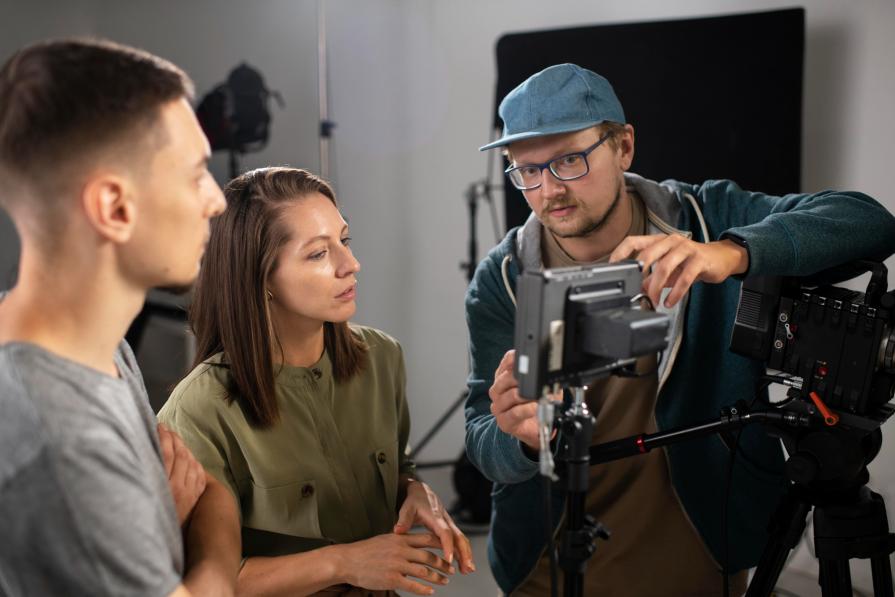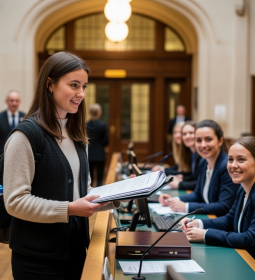Stanley Kubrick and Akira Kurosawa entered the film industry without graduating from film school. There are many other talented directors who have learned to make movies themselves. So why go to film schools and give a lot of money for specialized education?

Work with technical equipment

Professional cameras require special handling and have their own characteristics. Large shooting pavilions, constantly adjustable light, recording studios and editing equipment are things that you are unlikely to be able to work with with self-study.
Teamwork
Shooting films is a collective process in which the film crew must understand exactly what the director wants from it. Everyone needs to see one final picture and interact effectively with each other to create it, so communication takes up most of the work.
Practice
Term papers and diploma papers provide an opportunity to implement their own projects.
Set of required documents
To apply to a foreign film school, you need to collect:
- Translations of existing diplomas and certificates
- International language certificates of the country of study
- A certain number of strong motivation letters
- Letters
- Portfolio and best practices.
Of the specific requirements - a ready-made own project: future directors need to provide the film with a timing of several minutes (or at least its script). Somewhere separately arrange interviews or conduct entrance exams. In France, at La Fémis, applicants analyze excerpts from films, write their own scripts and make films based on them with real actors and cameramen.
American Film Institute (AFI)

Unique opportunities open up for students of this film school. A small AFI over the past couple of years has become very popular among other American educational institutions. In their personal portfolio, after two years of study at the master's program, graduates will have as many as four personally shot films! Among the teachers there are world-famous directors and producers: Kathleen Kennedy, Spike Lee, Sofia Copolla. AFI produces talents that shape the face of the modern film industry.
USC School of Cinematic Arts
Students at the School of Cinematographic Arts in Southern California are given the opportunity to work with the equipment and technology that established directors have worked with. The list of advantages and opportunities opening up for students is great: huge pavilions for filming, editing stations, animation and sound recording studios, IMAX cinema.
Only professionals in their field graduate from school. Judd Apatow and Kevin Feige, the head of Marvel Studios, studied at this school.
CalArts

The founder of the California Institute of the Arts is considered to be Walt Disney. From the walls of this unique educational institution come future animation directors, for example, Tim Burton studied here. Among other universities, CalArts is famous for its school of documentary and indie cinema.
Kanbar Institute of Film & Television, NYU
More than 5,000 films are shot annually at the Maurice Canbar Film and Television Institute. Except for the Tasha School of Art of New York University, outside of Los Angeles, no one else can boast of such a large amount of footage and the number of graduates. NYU was completed by Chris Columbus (Harry Potter film series), Martin Scorsese, Vince Gilligan.
Vancouver Film School

The Vancouver Film School offers a wide range of directions in 3D animation, directing, sound design, screenwriting, etc. Since the school is a private educational institution, training here is expensive, but every year the school management raffles off a certain number of scholarships for the most talented with coverage of all expenses.
London Film School

The main feature of the London Film School is practice on real film sets. London Film School is focused on the development of production skills, not just the theoretical base. 220 students from more than 30 countries study in this small institution.
National Film and Television School (NFTS)

Best Film School in Britain. The National School of Film and Television has its own real film and television studios. In 2016, the NFTS received $26 million: additional funding helped open two new buildings equipped with the latest technology.
Among the NFTS graduates there are many recognized filmmakers: Roger Deakins ("The Shawshank Redemption"), David Yates (a series of films about Harry Potter).
University of Television and Film, Munich (HHF)
In all of Germany, there is no film school that could be compared with the University of Film and Television in Munich in terms of the number of recognized directors. Roland Emmerich ("Independence Day"), Florian Henkel von Donnersmarck ("The Lives of Others") studied here. Some even won an Academy Award.
Since the university is public, the training is free, and you only need to pay a fee. For admission, you need to know the language not lower than level B2.
La Fémis

One of Europe's most recognized film schools, the Hochschule für Nationale d'Audiovisual Arts (La Femy) produces filmmakers who take away awards at the Cannes, Venice and Berlin Film Festivals. Only those who have already studied at a university in their homeland for two years can enter the public school of La Femi. Training is conducted exclusively in French.
Lodz Film School

Forge of the Polish film industry. They teach here only in Polish, but you can enter here with knowledge of English after a one-year language course. Here you can unlearn at the bachelor's, master's and PhD.'













